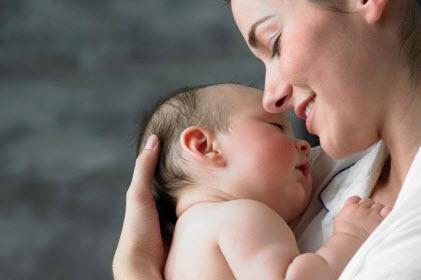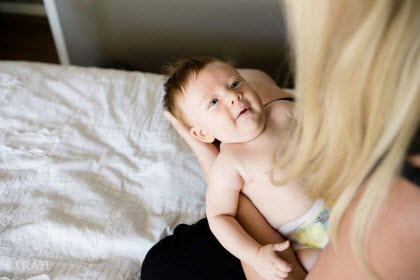I first came across this quote some 15 years ago when I was studying Psychotherapy at The Churchill Clinic. As was the case with most of my study in those formative years, I heard the words and filed them away not knowing what would or wouldn’t be useful in my future therapy practice.
As I sit with my clients all these years later it becomes apparent that indeed “Love is the problem and Love is the cure.” It is one of those truisms that is relevant to every case that arrives at my therapy door.
The circumstances are always different, but a common theme is the way we experience love in our early years. This plays a big part in shaping our future and how we adapt to the world in our adult life.

From the beginning infants have two behaviours of communication: gurgles and coos of satisfaction and cries of dissatisfaction. The gurgles and coos are quickly associated by the infant with the presence of their caregiver, and the coinciding feeling of satisfaction develops into love. The infant takes delight in their caregiver, because they are present with them. As the infant suckles the mother, the mother gazes into their eye. This “loving gaze” reinforces the love, safety, nourishment and nurturance that is present. As the child grows up and reaches early adulthood, and if love was “done well” in those early years, this love then moves to “Agape Love.” This is an unconditional, self-giving love.
Sadly, this is not everyone’s experience and even the best of parents don’t always get it right.
The second behaviour of the infant, cries of dissatisfaction, are motivated by discomfort. This discomfort develops into fear; the fear of pain, hunger and the loss of the caregiver. In most cases the dissatisfaction and discomfort are short lived, and the infant will recover quickly. These experiences will promote the development of a healthy resilience over time, which is necessary to function in the world. If the dissatisfaction and discomfort are frequent and prolonged, the baby may get stuck in this place. Without reparation, the child can display maladaptive behaviours and insecurities during development.
We as humans are always operating from our own experience of love, good or bad, and our own human condition that seemingly has no limit.

So, what is the Human Condition?
According to Thomas Keating, a Trappist monk known throughout the world as a teacher and writer on contemplative prayer,
“We are born into the world with instinctual needs that are focused on survival and security, power and control, and affection and esteem. The human infant is totally dependent on a mothering person for everything, including life itself. Unless someone takes care of the infant he or she will surely die. When any of these instinctual needs, which are basically good, are experienced by the child as unfulfilled or withdrawn through abuse and neglect, (especially when it is habitual), the child, for survival purposes, may repress those painful, traumatic, emotional experiences in the unconscious. The infant will be stunted in their development, the child may also develop compensatory behaviours, programs for happiness in which he or she tries to find happiness in the gratification of one of those three instinctual needs”.
Programs for happiness develop through the socialisation period from ages four to eight, when we unquestionably absorb the values of the culture the environment, peer groups, parents, religion and our ethnic background. At that young age, there’s little or an incomplete ability to evaluate some of those values, so we absorb all of them. Our emotional programs for happiness are also attracted to what is acceptable in our culture, good and bad. Keating adds emotional programs for happiness can’t possibly work. They’re not moderated by the virtues.
In all human relationships, some fear for our self is present, because we know that the loved other can fail us, leave us, or can die. Often what we call love in relationships is directed to one person as an investment, hoping to get something back (don’t leave me).
True love doesn’t expect anything back, because it doesn’t need anything. It is already complete in itself.
The greatest gift you can give another human being is the gift of listening to them. When one person says to another “I know,” …, “I understand,” … “I can see why you feel that way,” the person being heard becomes whole again.
Over time, and with a desire to heal our wounds and fears, we get to know ourselves better, learn to love and forgive ourselves, and our limitations. With this knowledge, we let go of attachment and develop humility and, in doing so, we become free to love fully.
In conclusion Taetske Klein, teacher of the “clarity process,” explains love like a light bulb shining in a room. It doesn’t shine just on one person, it just shines. It doesn’t even matter if anyone is there or not, the light is shining. The light is complete in itself, and doesn’t need to feed on anyone in the room to be bright. That is the way love is. Love is an overflowing, love is a giving, love is a feeling of completion and fulfilment.
